News
PM Modi’s 79th Independence Day Address from the Red Fort

India’s Independence Day is more than a national celebration—it is a reminder of sacrifice, progress, and collective responsibility.
This year, as the nation marked its 79th Independence Day, Prime Minister Narendra Modi delivered his speech from the iconic Red Fort in New Delhi, highlighting India’s journey so far and its aspirations for the future.
His address was a blend of national pride, military courage, economic relief, and social responsibility. The speech not only honored India’s past but also laid down a roadmap for a self-reliant, stronger India.

The Significance of the 79th Independence Day
The 79th Independence Day came at a crucial moment when India is navigating global uncertainties, economic reforms, and a fast-changing geopolitical environment.
PM Modi’s speech was seen as both a celebration of resilience and a call to action for citizens to contribute to nation-building.
PM Modi’s Address from the Red Fort
Dressed in his trademark kurta-pajama and a colorful turban, PM Modi stood at the historic Red Fort to deliver his 90-minute address.
He began by paying tribute to freedom fighters, soldiers, and farmers who continue to serve as the backbone of the nation.
From there, he shifted to key issues—defense, economy, youth empowerment, and India’s role on the global stage.
Operation Sindoor: A Symbol of Military Bravery
One of the most striking parts of his speech was his reference to Operation Sindoor.
Without disclosing sensitive details, PM Modi praised the Indian armed forces for giving the enemy a response that was “beyond imagination.”
The operation, he said, showcased India’s ability to defend its sovereignty with unmatched courage and strategy.
This mention not only strengthened public confidence in the military but also sent a strong message globally—that India will respond firmly to any external threats.

Self-Reliance as National Pride
PM Modi emphasized the importance of Atmanirbhar Bharat (Self-Reliant India), linking it directly with national self-respect.
He noted:
- A self-reliant citizen strengthens the nation.
- Innovation, entrepreneurship, and skill-building must become a mass movement.
- India should aim to reduce dependence on imports and boost local manufacturing.
He framed self-reliance not just as an economic policy but as a matter of dignity and identity for the country.
Major Announcements for the Nation
GST Cuts Before Diwali
Ahead of the festive season, Modi announced reductions in GST rates for essential goods and services.
This decision is expected to:
- Provide relief to middle-class families.
- Encourage consumer spending during Diwali.
- Support small businesses by reducing their tax burden.
Economists have welcomed this move as a much-needed boost to domestic demand during the festive season.

Youth Employment Scheme
Another key highlight was the launch of a Youth Employment Mission.
The scheme focuses on:
- Creating jobs in startups, MSMEs, and technology sectors.
- Providing skill development training to graduates and diploma holders.
- Offering incentives to companies hiring fresh talent.
With over 65% of India’s population under 35, this announcement is seen as a step toward tackling unemployment and empowering the youth to be active contributors to the economy.
Sudarshan Chakra Mission
PM Modi also unveiled the Sudarshan Chakra Mission, aimed at boosting India’s defense self-reliance.
Under this mission:
- Advanced weapons, defense systems, and technology will be developed domestically.
- Private sector participation will be encouraged in defense manufacturing.
- India aims to emerge as a global defense exporter rather than just an importer.
This mission ties into India’s broader goal of becoming a hub for innovation and military technology, reducing dependence on foreign suppliers.
A Message of Unity and Responsibility
Beyond policy announcements, Modi’s speech carried a deeper message.
He urged citizens to embrace:
- Unity across diversity, stressing that India’s strength lies in its cultural and social fabric.
- Responsibility toward climate change, with a call to adopt eco-friendly lifestyles.
- Commitment to democracy and equality, ensuring that no citizen is left behind in the development journey.
His message to the youth was particularly inspiring—to dream big, innovate, and lead India into a future of global leadership.

Citizens’ Reactions and Expectations
The announcements received mixed but largely positive reactions across the country:
- Middle-class families welcomed the GST cuts as a relief before the festival season.
- Youth groups praised the employment scheme, hoping it translates into real opportunities.
- Defense analysts saw the Sudarshan Chakra Mission as a bold move toward self-reliance.
However, some experts stressed the need for effective implementation of these promises, warning that without strong execution, these initiatives might remain symbolic.
News
PM Modi in Mizoram & Manipur: Historic Railway Launch, Development Push, and First Visit Since Manipur Violence

Prime Minister Narendra Modi on Saturday inaugurated Mizoram’s first railway station at Sairang, marking the completion of the ₹8,070 crore Bairabi–Sairang Rail Line, a project that finally connects Aizawl to the Indian Railways network. Despite bad weather preventing him from addressing a rally at Aizawl’s Lammual Ground, PM Modi spoke virtually from Lengpui Airport, describing the day as “historic for Mizoram.”
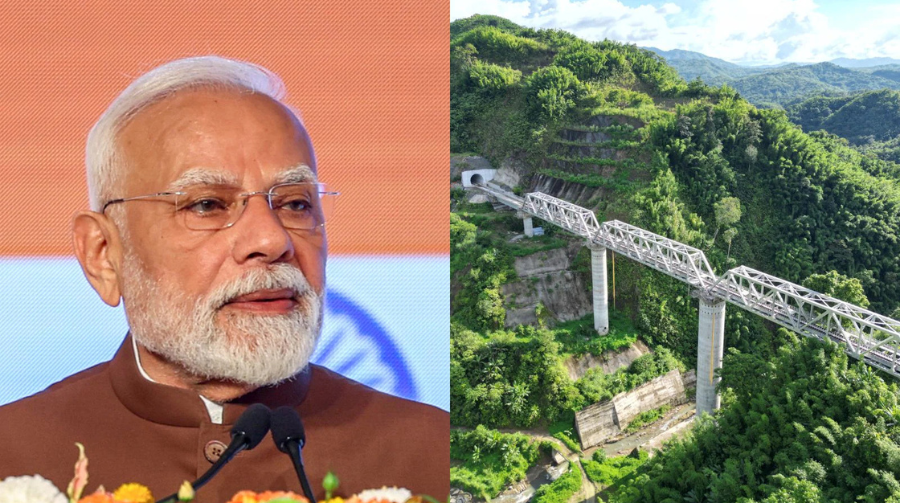
Mizoram: First Rajdhani Express and New Railway Era
- Historic Connectivity: Until now, Mizoram’s rail link was limited to the Silchar–Bairabi route in Assam. The new 51 km Bairabi–Sairang line brings Aizawl onto the national railway map for the first time.
- Engineering Marvel: The project comprises 45 tunnels, 55 major bridges, and 88 minor bridges, built through challenging hilly terrain.
- Flagged Off Services: PM Modi launched Mizoram’s first Rajdhani Express connecting Sairang to Delhi’s Anand Vihar. Two more services—Sairang–Kolkata Express and Sairang–Guwahati Express—were also inaugurated.
- Boost for Growth: The line is expected to cut transport costs, boost trade, tourism, and generate jobs while integrating Mizoram with India’s mainstream economy.
PM Modi said, “This is not just a railway line, it is a lifeline that will transform lives in Mizoram.”
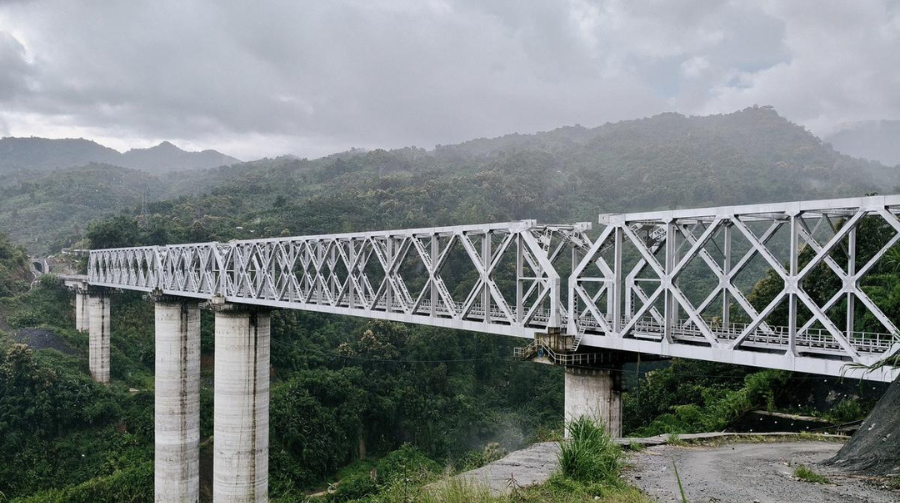
PM Modi on Vote Bank Politics in Northeast
During his speech, the Prime Minister also touched upon the political neglect of the Northeast in the past:
Manipur Visit: First Since Ethnic Violence
After Mizoram, PM Modi headed to Manipur, making his first visit since the ethnic violence of May 2023, which displaced thousands and led to President’s Rule being imposed in February 2025.
- Churachandpur Visit: Modi is expected to meet internally displaced persons (IDPs) in Churachandpur, a Kuki-majority district.
- Imphal Programmes: In the Meitei-dominated capital, Imphal, he will inaugurate and lay foundation stones for projects worth over ₹3,600 crore, including roads, highways, IT infrastructure, working women’s hostels, and the Ima Markets (the world’s largest all-women-run market).
- Symbolic Visit: His visit to both Kuki and Meitei areas is being seen as a strong message of reconciliation and inclusive development.
PM Modi posted on X:
“I will be attending programmes in Churachandpur and Imphal tomorrow. We are fully committed to inclusive and all-round development of Manipur.”

₹71,000 Crore Push for Northeast
The PM’s three-day tour across five Northeastern states includes projects worth over ₹71,000 crore, spanning railways, highways, power, digital infrastructure, and social development initiatives. Officials call it one of the biggest-ever development drives in the region.
Why This Visit Matters
- First railway connectivity for Mizoram’s capital.
- First Prime Ministerial visit to Manipur since ethnic conflict.
- Strong message of inclusive growth and ending neglect of the Northeast.
- Massive development boost across five states.
This moment marks both a historic leap in connectivity and a politically significant outreach to one of India’s most sensitive regions.
News
PM Modi Inaugurates Mizoram’s First Railway Station: Key Details of the Bairabi–Sairang Rail Project
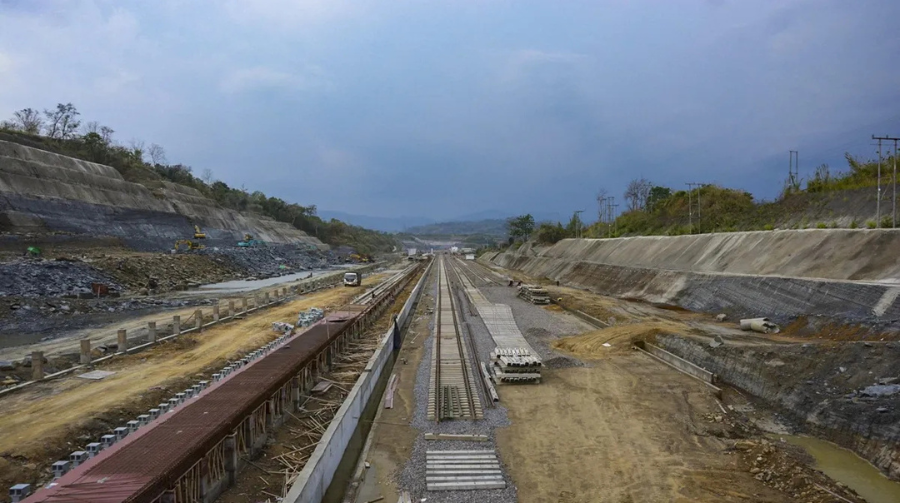
Prime Minister Narendra Modi inaugurated Mizoram’s first-ever railway station at Sairang, marking a historic milestone in India’s connectivity drive. The launch of the Bairabi–Sairang New Rail Line Project, valued at over ₹8,070 crore, officially brings Mizoram’s capital onto the Indian Railways map for the first time.
🚉 Historic Railway Inauguration
On Saturday, PM Modi flagged off the first trains from the Sairang railway station, situated about 12 km from Aizawl. This fulfills a long-standing national vision to connect all state capitals in India’s Northeast by rail.
The inauguration was hailed as a landmark moment of inclusive development, aimed at strengthening integration of the Northeast with the rest of the country.
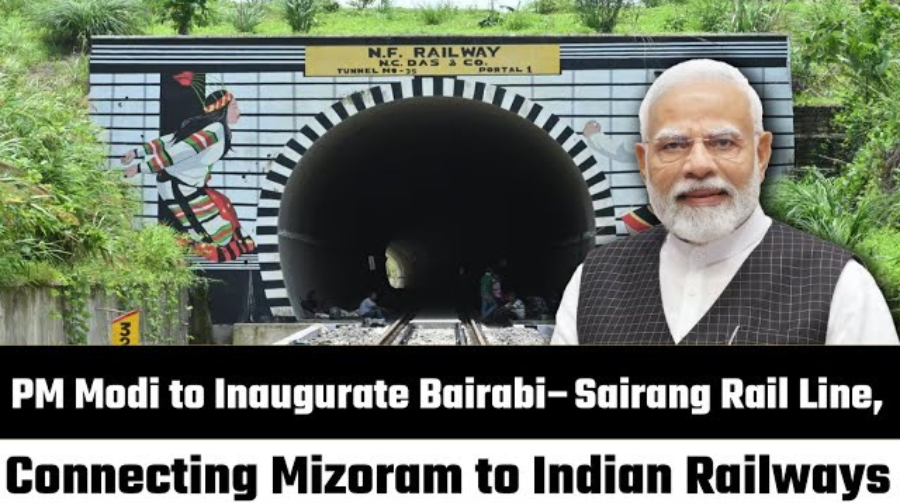
📌 Key Details of the Bairabi–Sairang Project
- Length & Route: 51.38 km of railway line built through rugged, hilly terrain of Mizoram.
- Engineering Marvel: The project includes 48 tunnels, 142 bridges (55 major, 87 minor), road overbridges, and underbridges.
- Highlight: Bridge No. 196, standing 104 meters tall, is taller than Delhi’s Qutub Minar, making it the highest bridge in Mizoram and the second-highest pier bridge in Indian Railways.
- Cost & Timeline: Conceived in 1999, the line was completed at a cost of ₹8,070 crore after decades of engineering challenges including landslides and difficult weather.
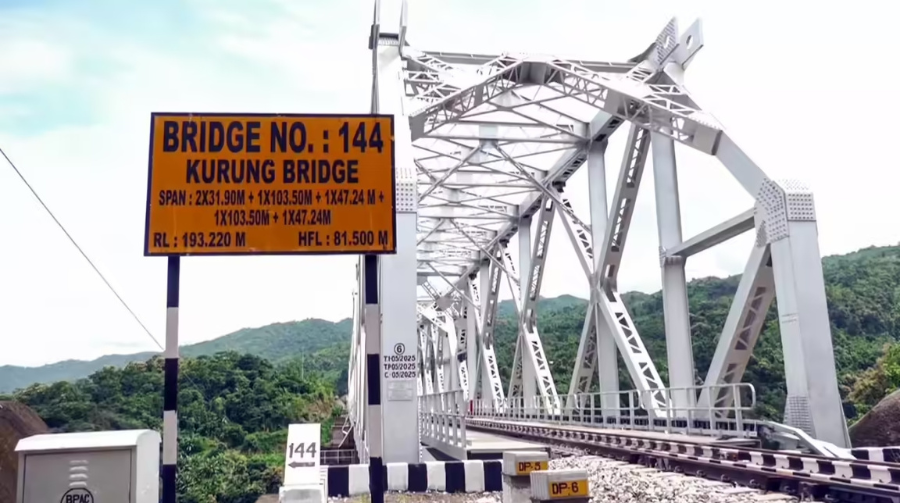
🌏 Connectivity & Socio-Economic Impact
- Regional Link: Aizawl is now the fourth northeastern capital (after Guwahati, Agartala, and Itanagar) connected to the national railway grid.
- Trade & Tourism: The line will reduce dependence on roadways, cut travel costs, and make Mizoram more accessible for business, tourism, and employment.
- Future Prospects: Plans are underway to extend the line further toward the Myanmar border, tying in with the Kaladan Multimodal Transit Project, opening new international trade opportunities.
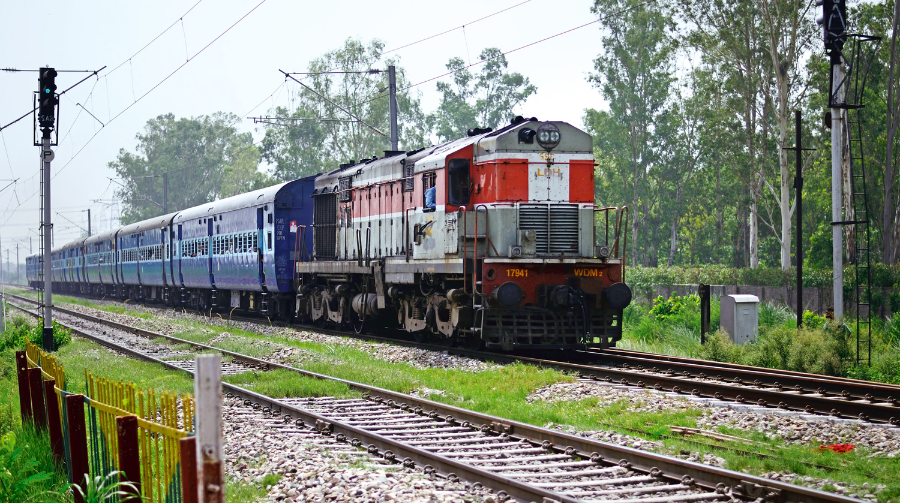
🚄 Inaugural Train Services
- Mizoram’s First Rajdhani Express: Connecting Sairang directly to Anand Vihar Terminal (Delhi), covering 2,510 km in 43 hours.
- New Express Trains: Direct links to Kolkata and Guwahati, ensuring faster and more reliable connectivity for residents.
🏗️ Symbol of Inclusive Growth
Mizoram Governor and Railway Minister hailed the project as a symbol of inclusive national development, bridging geographic isolation with modern infrastructure.
PM Modi emphasized that such projects embody India’s vision of ensuring equal progress in every corner of the country, no matter how remote.
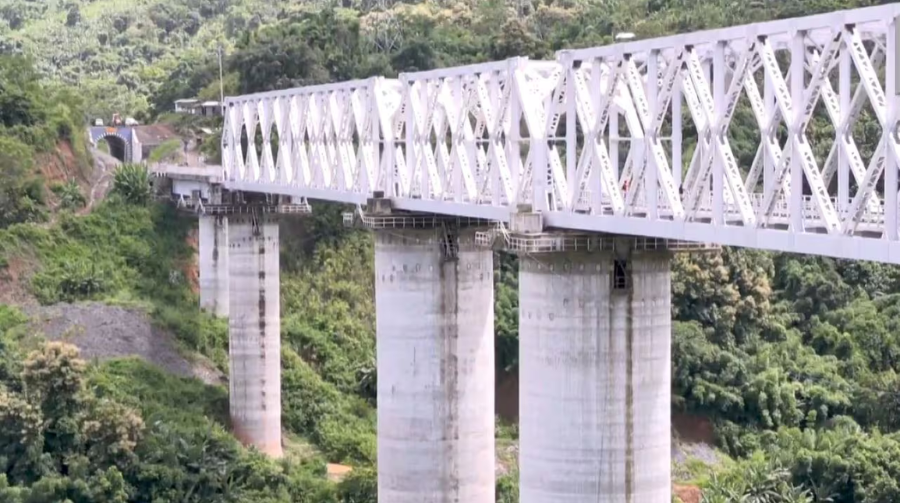
📖 Conclusion
The inauguration of the Bairabi–Sairang rail line is more than a transport milestone—it represents integration, opportunity, and growth for Mizoram and the entire Northeast. From cutting travel time to enhancing economic prospects, the project is poised to transform the lives of lakhs of people, while also showcasing India’s engineering prowess in one of the country’s most challenging terrains.
News
Delhi Police Busts ISI Spy Module: Nepali Man Held for Sending Indian SIM Cards to Pakistan
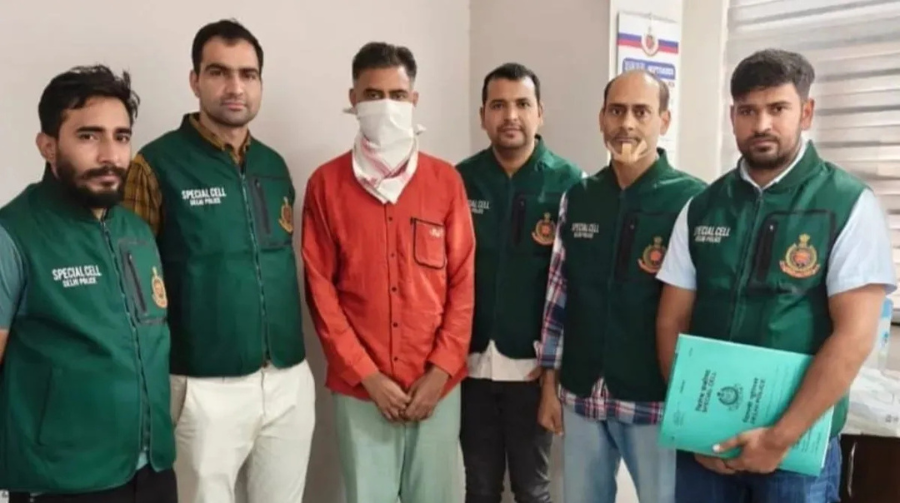
The Delhi Police Special Cell has busted a major espionage racket linked to Pakistan’s intelligence agency ISI and arrested a 43-year-old Nepali citizen, Prabhat Kumar Chaurasia, for supplying Indian SIM cards that were being used in Pakistan.
According to officials, Chaurasia had procured 16 Indian SIM cards (Airtel and Jio) using his Aadhaar card. Out of these, 11 SIM cards were traced as active on WhatsApp in Pakistan, in cities like Lahore and Bahawalpur. The SIM cards were smuggled through Nepal to ISI handlers, who used them to attempt contact with Indian Army officials.

Attempts to Extract Sensitive Defence Information
Police investigations revealed that Chaurasia had been in touch with ISI operatives since 2024. The Pakistani agency allegedly lured him with promises of a US visa and a career in journalism abroad in exchange for his services.
Through the WhatsApp accounts registered on these Indian SIMs, attempts were being made to extract sensitive defence-related information. Delhi Police has registered a case under sections 61(2)/152 of the BNS at the PS Special Cell and further interrogation of the accused is underway to uncover wider links.
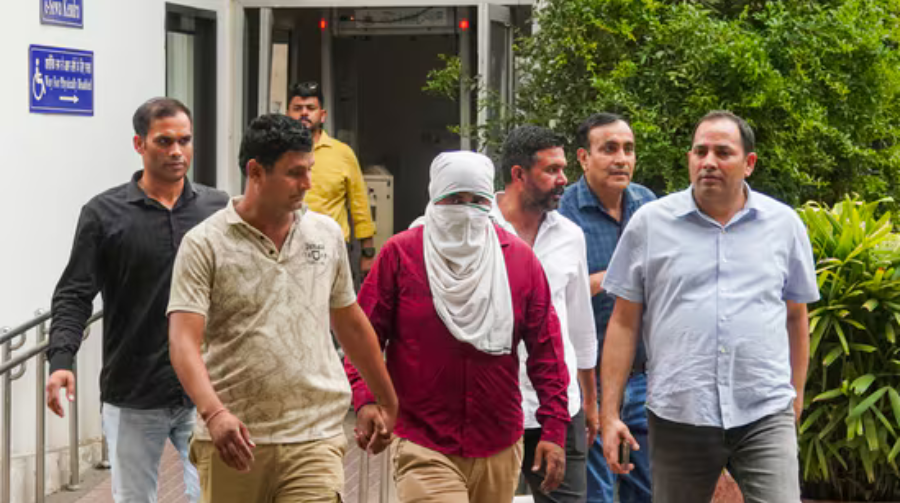
Pakistan’s Continued Espionage Attempts
This case adds to a long list of espionage attempts by Pakistan that Indian security agencies have foiled over the years. By exploiting loopholes in telecom systems and targeting vulnerable individuals with financial or career incentives, ISI has repeatedly tried to infiltrate Indian defence communications.
Officials pointed out that routing SIM cards through Nepal is a known ISI tactic to bypass direct detection. The fresh module’s bust highlights how Pakistan continues to adopt underhanded methods to destabilise India and gather intelligence.

Timing Amid Strained India-Pakistan Relations
The incident comes against the backdrop of tense India-Pakistan ties, particularly after the recent Pahalgam terror attack, where India publicly exposed Pakistan’s role before the international community. This exposure has reportedly irked Islamabad, prompting renewed espionage efforts.
Indian agencies, however, remain vigilant. The arrest of Chaurasia and the exposure of this spy module is seen as a major success in neutralising Pakistan’s covert operations.

Significance of the Bust
- Prevented possible leaks of defence information.
- Exposed ISI’s recruitment tactics using false promises of foreign visas and careers.
- Highlighted the use of telecom loopholes (routing SIMs via Nepal).
- Strengthened India’s counter-espionage operations at a sensitive time in regional security.
-

 Celebrity Lifestyle4 months ago
Celebrity Lifestyle4 months agoEx-Cricketer Shikhar Dhawan Buys Ultra-Luxury Apartment Worth ₹69 Crore in Gurugram
-

 Glamour & Entertainment3 months ago
Glamour & Entertainment3 months agoTelegram Channels Disseminating Pro‑Russian Propaganda in Poland
-

 Business3 months ago
Business3 months agoAmazon sets 30‑day relocation deadline for corporate staff—opt out by resigning in 60 days
-

 Celebrity Lifestyle3 months ago
Celebrity Lifestyle3 months agoMaha Kumbh Girl Monalisa seen in car allegedly worth ₹1 crore
-

 Education3 months ago
Education3 months agoNEET UG Controversy Explained: Paper Leak, Impersonations & Ongoing Probe
-

 News4 months ago
News4 months agoIndia offers zero-for-zero tariffs on auto parts, steel from US
-

 News4 months ago
News4 months agoOperation Sindoor Live Updates: Pakistan used Turkey-made drones to target 26 locations, military sites in north India
-

 Cricket3 months ago
Cricket3 months ago💥 Nicholas Pooran IPL Heroics: Sixes, Records & Match-Winning Blasts




